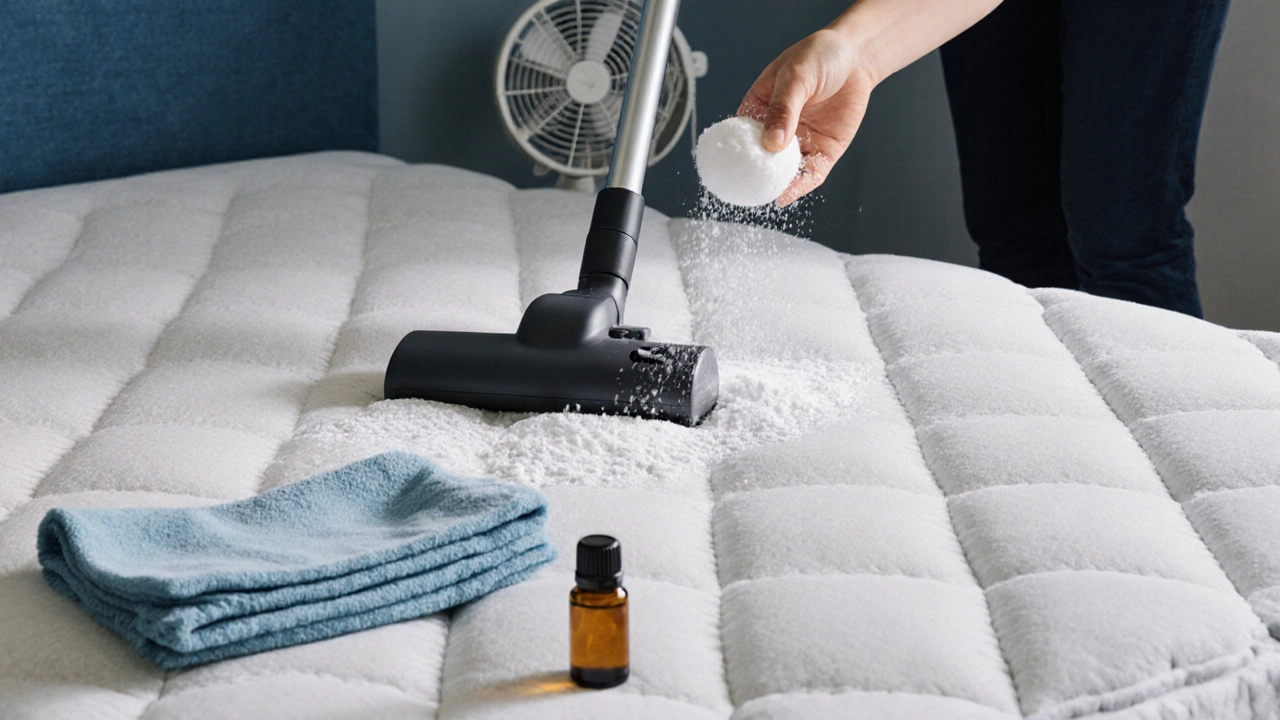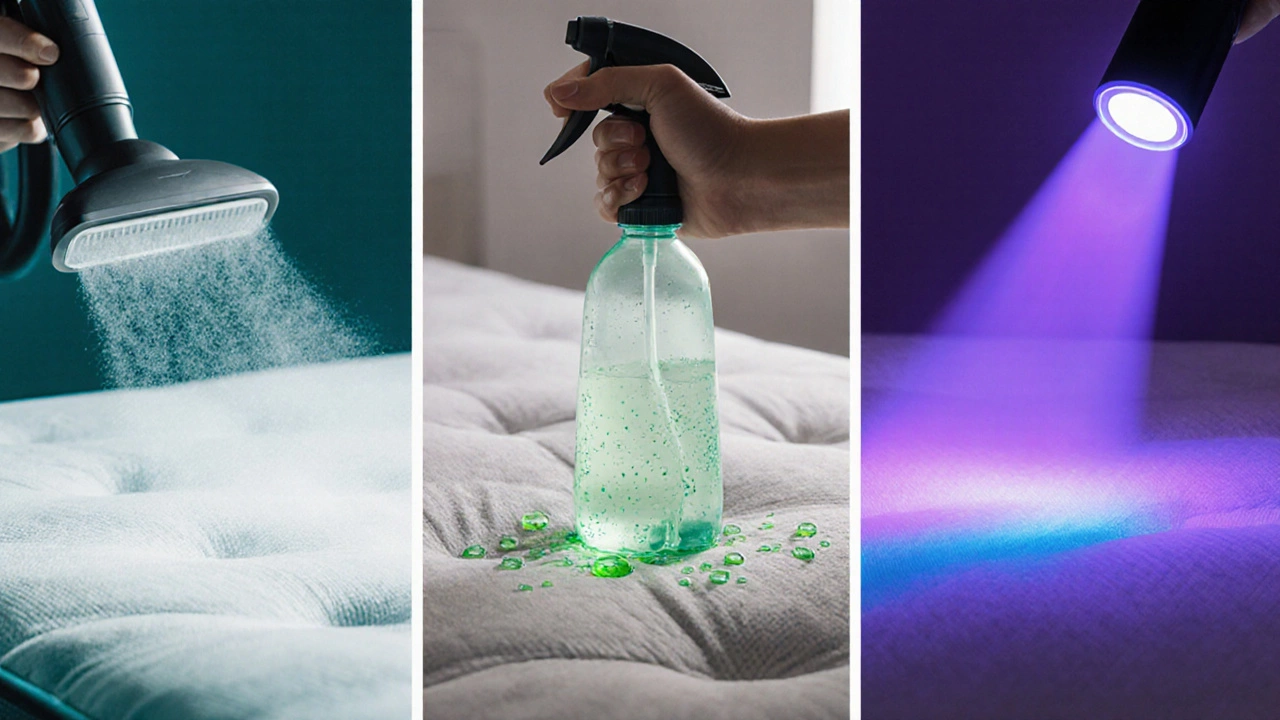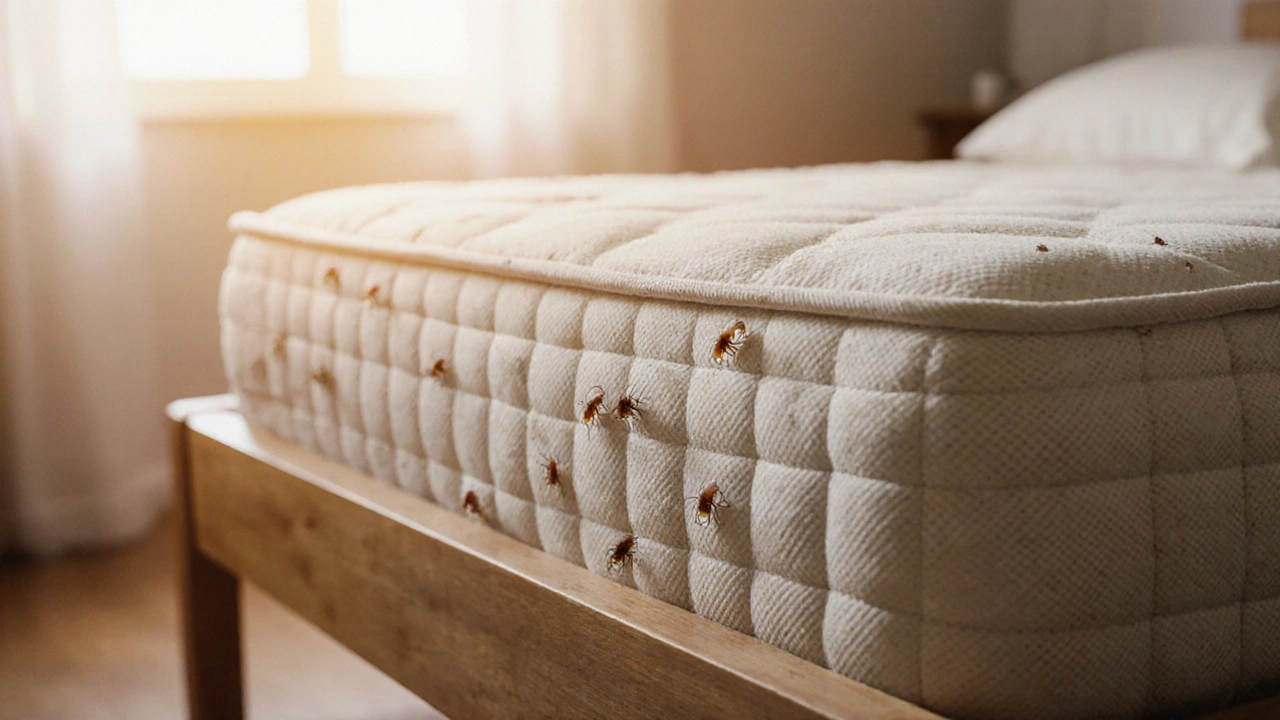Mattress Cleaning Method Selector
Which cleaning method is right for you?
Answer a few questions to find the most effective mattress cleaning method for your situation.
Select your concerns and budget to see your personalized recommendation.
When it comes to mattress cleaning is a process that removes dust, allergens, stains, and odors from your sleeping surface, extending its life and improving sleep quality. A dirty mattress can harbor dust mites, bacteria, and lingering smells that affect both health and comfort. Below is a step‑by‑step guide that covers everything from a quick weekly refresh to a thorough deep clean.
Why Clean Your Mattress?
Most people think a mattress only needs a fresh set of sheets, but the truth is a mattress accumulates a surprising amount of debris. Studies from the National Sleep Foundation show the average mattress holds up to 10,000 dust mites and their waste. Those microscopic allergens can trigger sneezing, asthma attacks, and skin irritation. In addition, sweat, spilled drinks, and pet dander create stubborn stains and funky smells that pull you out of deep sleep.
Regular mattress cleaning not only protects your health, it also:
- Prevents premature wear, saving you money on a replacement.
- Reduces nighttime allergies and improves air quality.
- Eliminates odors, making the bed feel fresher.
- Creates a better environment for a good night’s rest.
Gather the Right Tools
Before you start, make sure you have these essentials. Each item is marked up the first time it appears so search engines can link the concepts.
- Vacuum cleaner is a household appliance that uses suction to lift dust, hair, and debris from surfaces. A model with an upholstery attachment works best.
- Baking soda is a natural, alkaline powder that neutralizes odors and absorbs moisture.
- Enzyme cleaner is a solution that breaks down protein‑based stains like blood, urine, and sweat.
- Steam cleaner is a device that emits hot vapor to disinfect and loosen grime without chemicals.
- Mattress protector is a waterproof, breathable cover that shields the mattress from spills and allergens.
- Essential oils are concentrated plant extracts that add a pleasant scent and can have antimicrobial properties.
- UV sanitizer is a portable lamp that uses ultraviolet light to kill bacteria and dust mites.
- Soft clean cloths or microfiber towels for spot treatment.
Basic Weekly Refresh (The 5‑Step Routine)
- Vacuum the surface. Use the upholstery nozzle and move slowly across the entire mattress, paying extra attention to seams and edges where dust mites like to hide.
- Deodorize with baking soda. Sprinkle a generous layer (about ¼ cup) over the top side. Let it sit for at least 30 minutes; longer-up to two hours-if the odor is strong.
- Brush off the powder. After the waiting period, vacuum again to remove the powder and the odors it has absorbed.
- Spot‑treat stains. For fresh spills, dab (don’t rub) with a cloth soaked in cold water mixed with a few drops of mild dish soap. For older stains, apply enzyme cleaner according to the label, let it work for 10‑15 minutes, then blot dry.
- Air‑dry. Open windows or place a fan near the bed to speed up drying. A fully dry mattress prevents mold growth.
Doing this routine once a week keeps allergens at bay and maintains a fresh scent.
Deep Cleaning Options (When to Go Extra)
If you haven’t cleaned your mattress in months, notice a persistent smell, or are dealing with a severe allergen problem, choose one of the following deep‑cleaning methods. The comparison table below helps you decide which fits your needs.
| Method | Effectiveness | Time Required | Cost | Safety for Mattress |
|---|---|---|---|---|
| Steam Cleaner | High (kills 99% of mites & bacteria) | 30‑45 min | $$ (rental or purchase) | Generally safe; avoid over‑wetting |
| Enzyme Cleaner | Very High for organic stains | 15‑20 min + drying | $ (commercial bottle) | Safe; follow manufacturer dilution |
| Baking Soda + Vacuum | Moderate (odor control) | 1‑2 hrs (including soak time) | Free‑$ (pantry staple) | Completely safe |
| UV Sanitizer | High for surface microbes | 10‑15 min | $$$ (device purchase) | Safe; no chemicals |
| Professional Service | Very High (expert equipment) | Varies (usually 2‑3 hrs) | $$$ (per visit) | Guaranteed safe, warranty‑backed |

Step‑by‑Step Deep Clean with a Steam Cleaner
- Fill the steam cleaner with distilled water to avoid mineral buildup.
- Set the temperature to the highest safe setting (usually 212°F/100°C).
- Begin at the head of the mattress, moving slowly in overlapping passes. Hold the nozzle about 2‑3 inches above the fabric; you want steam, not soaking.
- After the entire surface is steamed, let it sit for 5‑10 minutes so the heat kills any lingering microbes.
- Ventilate the room thoroughly. Open windows, turn on fans, and allow the mattress to dry completely (at least 2‑3 hours).
Steam cleaning is excellent for households with pets or allergy sufferers because it eliminates dust mites without harsh chemicals.
Enzyme Cleaner Deep Clean for Stubborn Stains
- Mix the enzyme cleaner with water according to the label (usually 1:4).
- Apply the solution to stained areas using a spray bottle. Saturate but don’t drench.
- Cover the treated spot with a clean cloth and let the enzymes work for 15‑20 minutes.
- Blot the area with a dry towel to lift the broken‑down residue.
- Finish with a light vacuum to remove any remaining particles.
Enzymes break down proteins, making them perfect for urine, sweat, and blood stains that regular cleaners can’t fully erase.
Using a UV Sanitizer
UV sanitizers are handheld devices that emit UV‑C light, which disrupts the DNA of microbes. Hold the wand about 2 inches from the mattress and sweep slowly across the surface. A 10‑minute pass is enough for a noticeable reduction in bacteria and dust mite spores. Remember, UV doesn’t remove physical dirt; it’s a supplemental step after vacuuming.

Common Mattress Issues and Targeted Solutions
- Dust Mite Allergy: Vacuum weekly, use a mattress protector, and run a UV sanitizing session monthly.
- Bad Odor: Sprinkle baking soda, let sit overnight, then vacuum. For persistent smells, combine steam cleaning with a few drops of essential oils (lavender works well) in the water reservoir of the steam cleaner.
- Stubborn Stains: Apply enzyme cleaner, let it break down the stain, then blot. If the stain remains, repeat the process or consider a professional service.
- Mold or Mildew: This usually means excess moisture. Remove the mattress from the bed, place it in a sunny, well‑ventilated area, and use a fan to dry. After it’s dry, treat with a mixture of equal parts water and white vinegar, then vacuum.
Maintenance Checklist - Keep Your Mattress Fresh All Year
- Vacuum both sides of the mattress every month.
- Apply baking soda and vacuum quarterly.
- Rotate the mattress 180° every 3‑6 months to even wear.
- Use a mattress protector at all times.
- Spot‑treat spills within 15 minutes to prevent deep staining.
- Run a UV sanitizing pass or steam clean annually, or after a heavy illness in the household.
Frequently Asked Questions
How often should I deep clean my mattress?
A full deep clean using steam or enzyme solutions is recommended twice a year. If you have pets, allergies, or notice strong odors, increase the frequency to every six months.
Can I use regular laundry detergent to clean my mattress?
It’s best to avoid heavy detergents because they can leave residue that attracts dust. Stick to mild soap for spot cleaning or use a dedicated enzyme cleaner for organic stains.
Is steam cleaning safe for memory‑foam mattresses?
Yes, as long as you keep the nozzle a few inches away and avoid saturating the foam. Excess moisture can break down the foam’s structure, so thorough drying is crucial.
Do mattress protectors eliminate the need for regular cleaning?
Protectors block spills and most allergens, but they don’t stop dust from settling on the mattress surface. You should still vacuum and deodorize monthly.
What’s the quickest way to get rid of a night‑time sweat smell?
Sprinkle baking soda over the entire top, let it sit for an hour, then vacuum. For extra freshness, add a few drops of lavender essential oil to the baking soda before you apply it.
With the right tools and a clear routine, keeping your mattress clean is far easier than most people think. Regular upkeep not only boosts comfort but also protects your health-making every night a little better.
